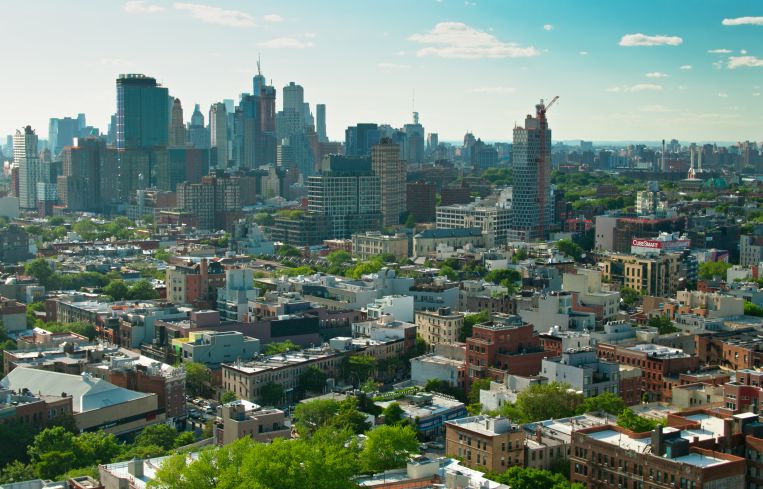Brooklynites Push for Safer Streets, Affordable Housing in Atlantic Avenue Rezoning
By Rebecca Baird-Remba August 30, 2023 12:09 pm
reprints
The desires of long-suffering residents in one of Brooklyn’s fastest gentrifying neighborhoods are finally being heard.
After several months of meetings about rezoning the industrial borderlands of Crown Heights and Prospect Heights for residential development, the Department of City Planning has released a report detailing what central Brooklynites want from the city as part of the process, including pedestrian upgrades along Atlantic Avenue, better homeless services and more affordable housing.
The project — formerly known as M-CROWN but now called the Atlantic Avenue Mixed-Use Plan (AAMUP) — hopes to transform 13 blocks between Atlantic Avenue, Vanderbilt Avenue and Nostrand Avenue from a mix of low-slung commercial buildings and retail into housing, green space and modern commercial, industrial and community facility spaces.
“The AAMUP rezoning has been a long time in the making,” said Crystal Hudson, the City Council member representing Brooklyn’s District 35. “For more than a decade, the community surrounding Atlantic Avenue has called for a new vision for this dangerous corridor that delivers more deeply affordable housing, increased investments in the area’s local economy, safer streets, and greater consideration of local infrastructure needs.”
One major focus for AAMUP was improving Atlantic Avenue, a busy, dangerous road beneath the elevated Long Island Rail Road tracks that divides Crown Heights from Bedford-Stuyvesant and Prospect Heights from Fort Greene and Clinton Hill. Locals hope to see wider sidewalks, longer pedestrian crossing signals, more crosswalks, better bike lane connections, seating, landscaping, better lighting under the elevated tracks, more trees and improved stormwater infrastructure for that stretch.
Neighbors also hoped to see a redesign of the street that would prevent speeding and dangerous turns, prioritize public transit using bus lanes, and allow for truck loading and unloading in a safe manner. Other proposed upgrades included waste containers on sidewalks — which has already been piloted in part of Harlem — and regular street cleaning in the part of the industrial zone along Dean Street that does not currently have it.
Transit-wise, residents are hoping to see more frequent C train service and dedicated, physically separated bus lanes on Bedford Avenue.
In terms of housing, participants in the meetings want taller buildings along Atlantic Avenue and “medium densities and building heights” along narrower streets like Bergen and Dean streets, according to the report released Tuesday by the city. They also wanted to ensure that Mandatory Inclusionary Housing — which is mapped on any area rezoned by the city — would require extremely low-income housing for people who earn less than 50 percent of the area median income, which is $63,550 for a family of three. Buildings should also have charging for electric mobility devices, including e-bikes, e-scooters and e-skateboards, along with electric vehicle-ready parking.
Brooklynites also wanted to see better utilization of empty space at the Bedford-Atlantic Armory, one of the largest men’s drop-in shelters in the city. Part of the Armory should be converted to homelessness services, the report said, while residents want the rest converted to space for community organizations, a recreation center, or even a public library.
Other recommendations included detailed school planning for future growth and relocation assistance for businesses that may be displaced by the rezoning.
Rebecca Baird-Remba can be reached at rbairdremba@commercialobserver.com.


